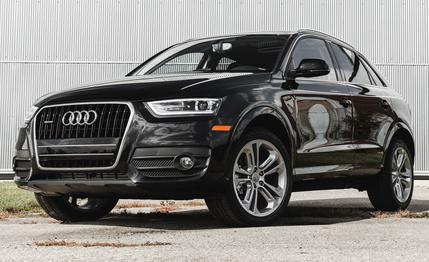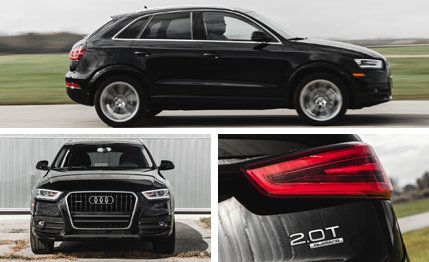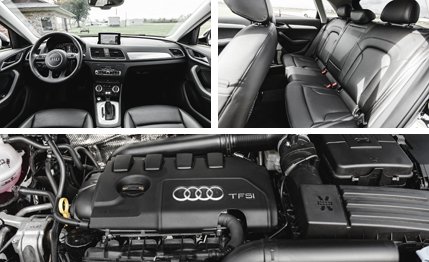
 Instrumented Test
Instrumented Test
After nearly three years on sale in other markets, the Audi Q3 has finally come to America. While it isn’t quite identical to the Q3 sold elsewhere (ours has a torque-converter six-speed automatic in place of the dual-clutch gearbox used in other countries, for example), the Q3 offers plenty of the same goodness of the Q5 and Q7, in a shrunken, mini-ute size.
Slotting beneath the Q5, the Q3 establishes a new entry point for Audi sport-utes in the States, giving the brand a competitor to the Mercedes-Benz GLA and the BMW X1. Although it is a relative of the Volkswagen Tiguan, the Q3’s chassis features more aluminum and high-strength steel than its VW counterpart. It does not, however, avail itself of the newest MQB architecture that underpins the latest Audi A3—that will have to wait for the second-generation Q3.
The base price of our four-wheel-drive test example is $35,525, which sounds like a lot for such a small car, but the interior appointments, design, and feel are all top-notch. Genuine leather seats come standard, and the Q3 gets a version of Audi’s MMI ($1900 with navigation), the infotainment interface that sets the high bar for such systems, at least for the moment.


Putting that figure in context, we see that four-wheel-drive versions of the BMW X1 start about $2000 lower, but, as we learned with our long-term X1 xDrive28i, that model quickly becomes much costlier with options. The Benz offering starts $1300 less than the Q3 but lacks the dual-zone climate control, xenon headlamps, heated seats, and panoramic sunroof that are standard on the Q3. Adding those to the GLA pushes its price a few hundred dollars above the $38,625 as-tested figure of our Q3, which also came with navigation, 19-inch wheels, and a power hatch.
At first glance, the Q3 looks nearly identical to the Q5. Without anything to put its smaller size in perspective, one could easily mistake it for its larger sibling. Open any of the doors or the hatch, however, and the diminutive interior is apparent. Driver and passenger space is more than adequate, but taller front-seat occupants will force encroachment on the second-row legroom. And the rear cargo hold is rather shallow. Despite its small size, however, the Q3 delivers the elevated driving position that so many buyers crave.


The Q3, like the Tiguan, isn’t all that quick off the line. In fact, the X1 and the GLA complete the quarter-mile seconds sooner than the Q3. The Audi’s passing times are also slower by a good margin. This comes down to simple physics: The Q3, with 200 horsepower, is the least powerful of the German trio and the second-heaviest. Plus, its torque converter doesn’t launch nearly as hastily as the X1’s eight-speed ZF auto or the GLA’s dual-clutch transmission. Credit the 2.0-liter’s smooth torque delivery, which peaks at 207 lb-ft at 1700 rpm, for making the Q3 feel quicker than it actually is.
According to the EPA, the Q3 Quattro is the least efficient of all the four-wheel-drive mini-utes hailing from Europe, with a combined rating of 23 mpg. That’s 3-mpg worse than the X1 xDrive’s combined score and 4-mpg less than the GLA250 4MATIC. We saw 22 mpg overall.
The Q3 might not be the quickest or the most efficient member of the baby-ute class, but it’s quieter than the Tiguan and rides better than the Mercedes and the BMW. It goes down the road without any flinty suspension behavior resulting from an attempt to be sportier than it should. If it’s a luxury baby ute you’re seeking, there’s no reason to count past Q3.